Response of Asgrow® AG46X26 Brand to Skippy Stands in Twin-Row and Single-Row Plantings
January 26, 2018
Previous learning center demonstrations have indicated that soybeans have the ability to compensate yields in response to a wide variety of issues that occur in the field.
Twin-row plantings have increased in the mid- southern planting system, resulting in questions about the effects of skippy stands that sometimes occur.
This demonstration was designed as a follow-up to previous work done with twin-row plantings with additional data and incorporating into the data a set of treatments planted in single rows.
Trial Objective
Evaluate the yield compensation ability of soybeans planted in single-and twin-row systems, at a variety of populations, and with several skippy stand configurations.
RESEARCH SITE DETAILS
| Location | Scott, MS |
| Soil Type | Clay loam |
| Previous Crop |
Soybean |
| Tillage Type |
Conventional |
| Planting Date | 5/10/17 |
| Harvest Date | 10/20/17 |
| Potential Yield (bu/acre) |
60-70 |
| Seeding Rate (seeds/acre) |
Various |
This demonstration included treatments with planting rates ranging from 60,000 to 150,000 seeds planted/acre.
Single rows were on a 38-inch row spacing and were planted using conventional single-row planters.
Twin rows were planted using Monosem® planters on 38-inch rows with 7.5 inches between twin rows on the bed.
Plots were 6 rows x 175 feet long for a plot of approximately 0.1 acre/plot.
Skips were introduced into the planted plots by blocking holes in planter plates prior to planting. This was done using the “Skipulator” spreadsheet which is an original Monsanto Learning Center at Scott, MS idea.
Treatment List:
60,000 seeds with 12-inch skip
60,000 seeds with 24-inch skip
60,000 seeds with 36-inch skip
60,000 seeds, solid
90,000 seeds with 12-inch skip
90,000 seeds with 24-inch skip
90,000 seeds, solid
120,000 seeds with 12-inch skip
120,000 seeds, solid
150,000 seeds with 1-inch skip
150,000 seeds, solid
Understanding the Results
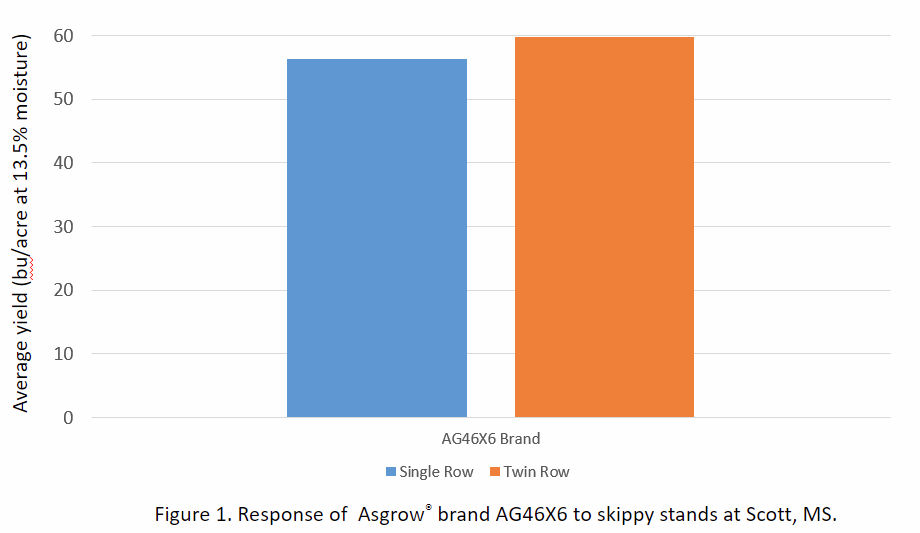

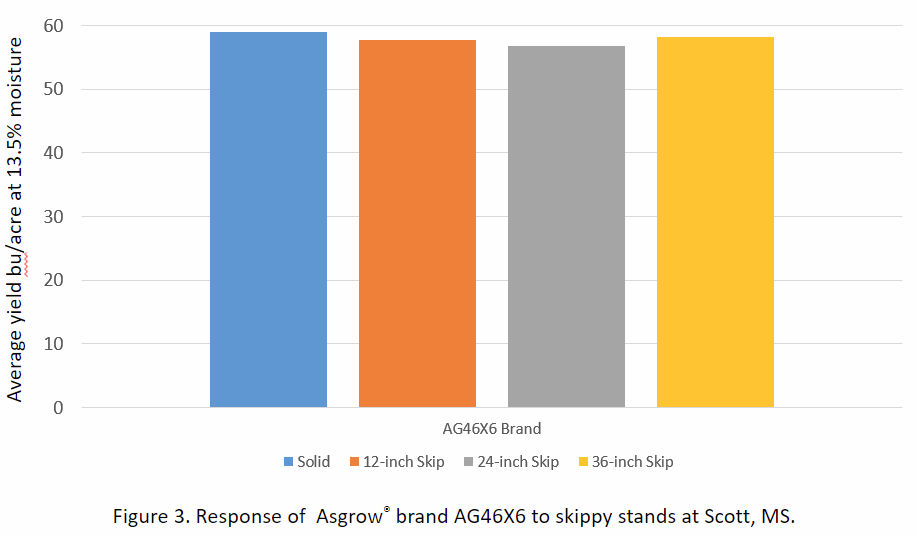
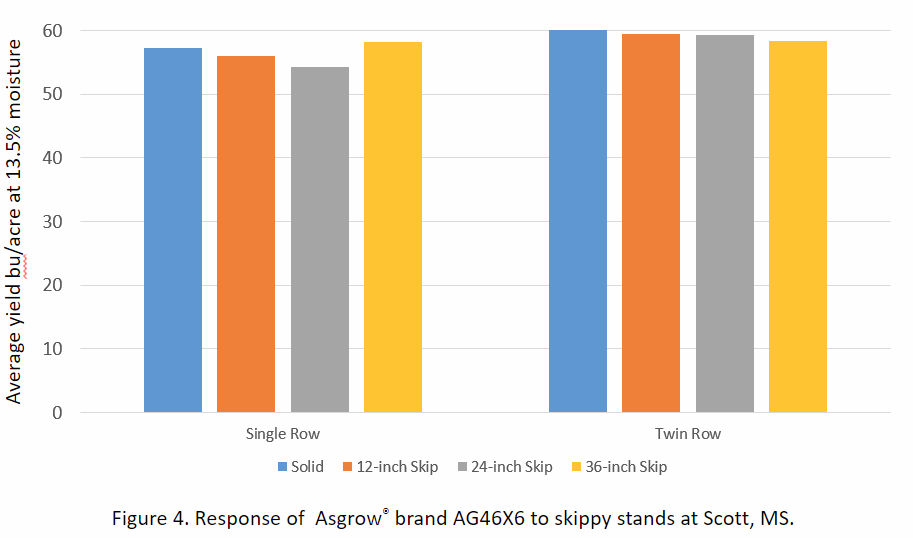
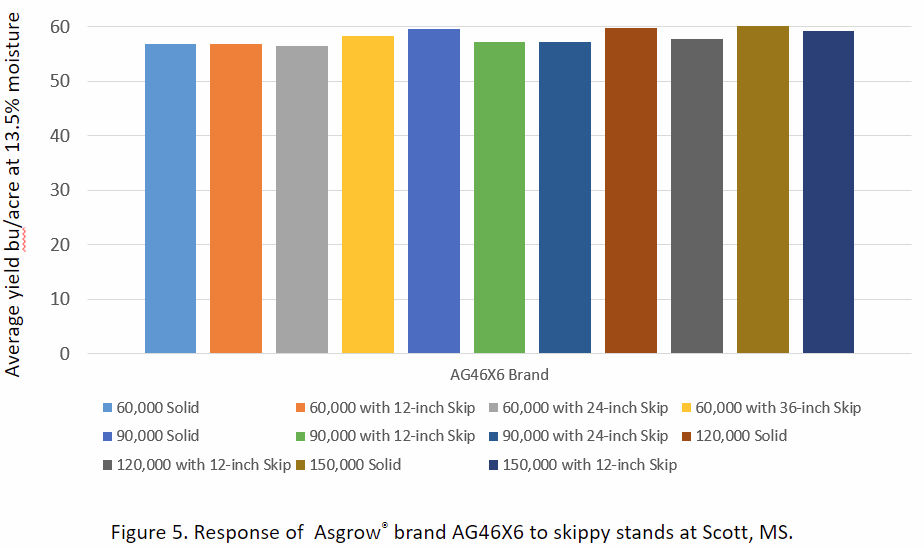

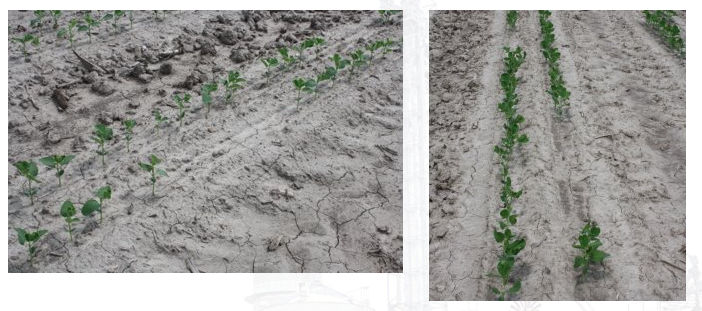

Key Learnings
These results DO NOT recommending planting at low populations.
If populations are reduced and somewhat uniformly distributed, soybeans have the ability to compensate and maintain acceptable yield potential.
This agrees with previous data showing tremendous compensation ability in soybean crops.
Evaluate each field and situation individually.
In many cases replanting is not necessary. Less-than-perfect soybean stands can be kept with reasonable expectation of maintaining yield potential.
Contact your local Asgrow® representative for more information.
Sources
1 Blackleg. 2021. Canola Encyclopedia. Canola Council of Canada. https://www.canolacouncil.org/canola-encyclopedia/diseases/blackleg/
2 Clubroot. 2021. Canola Encyclopedia. Canola Council of Canada. https://www.canolacouncil.org/canola-encyclopedia/diseases/clubroot/#:~:text=Clubroot%20is%20a%20serious%20soil,premature%20death%20of%20the%20plant.
3 Senko, S. 2021. Not all pod shatter resistance is the same. Canola Digest. https://canoladigest.ca/september-2021/not-all-pod-shatter-resistance-is-the-same/
2019_14100